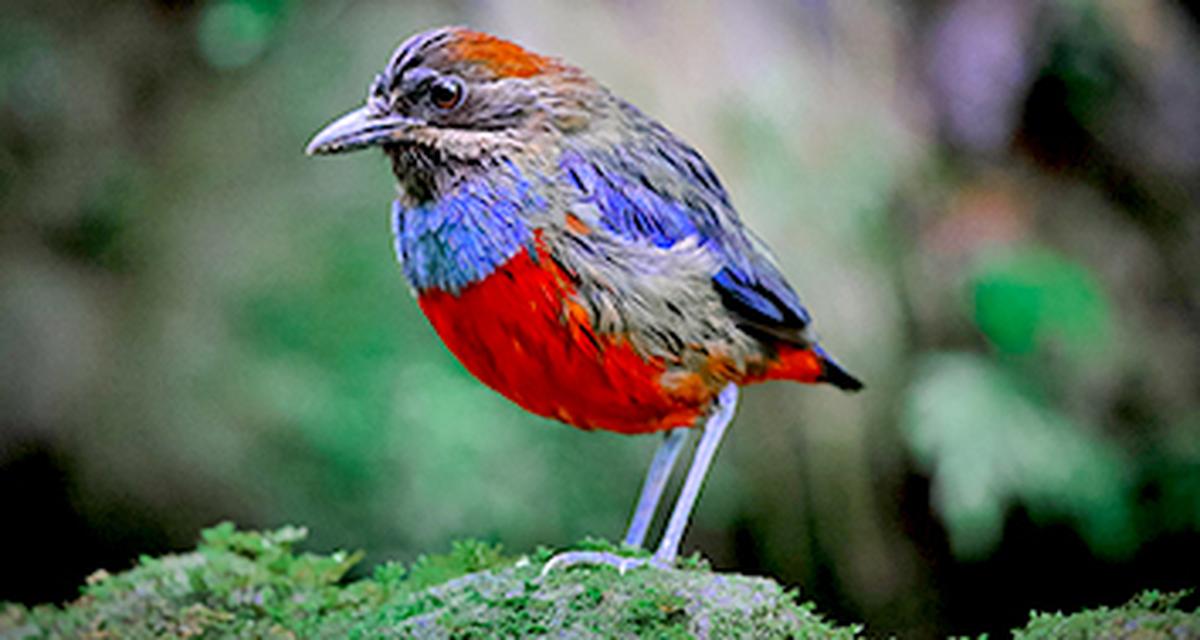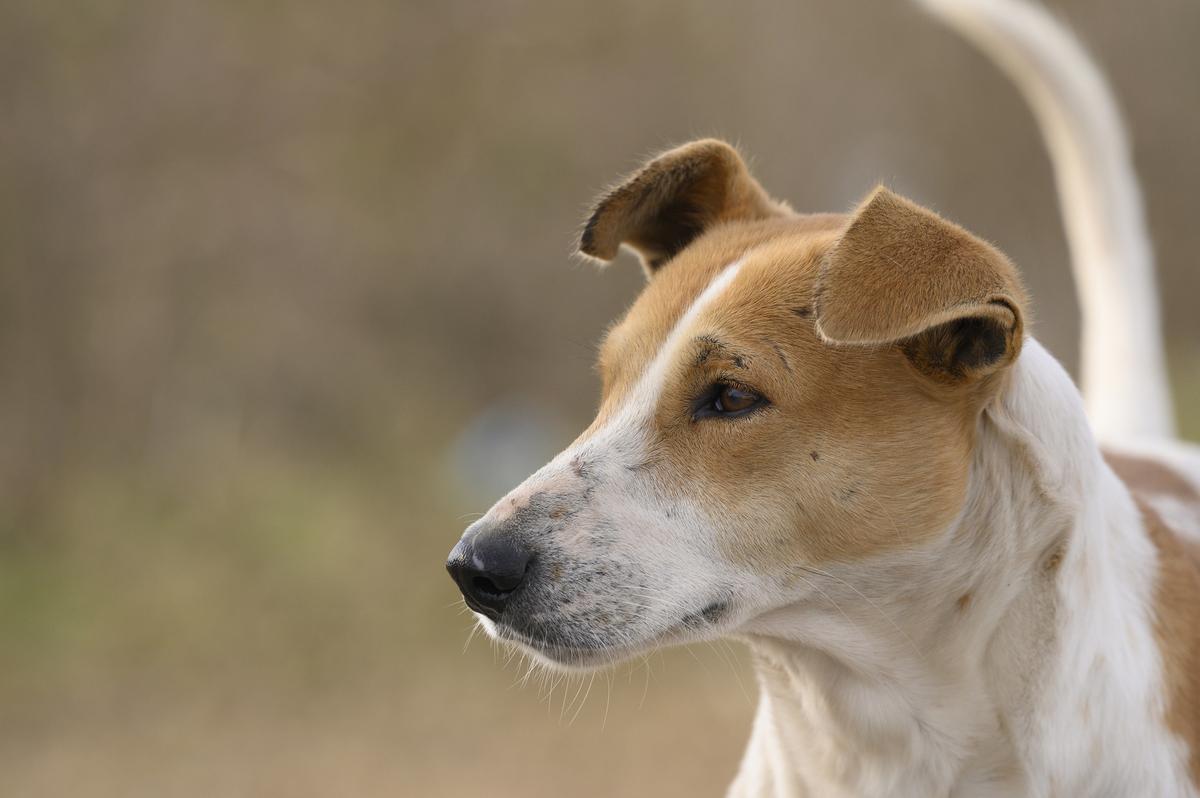Renee M. Borges often hears the distinct high-pitched calls of slender lorises from the canopy above her while driving home from the Indian Institute of Science. “There is the Central Power Research Institute on one side of the road and the IISc campus on the other,” says the evolutionary ecologist from IISc’s Centre for Ecological Sciences. “I can hear a loris above the road, crossing (from one campus to the other) through the trees.”
If the trees were not connected, it would be devastating to these animals, she says, at a recent lecture titled “Fostering the Urban Jungle” held at Science Gallery Bengaluru. In that scenario, these beautiful, insectivorous animals, among the oldest living primates in the world, would be unable to survive in the city. “I want to emphasise that the slender loris will only survive if there are connections between trees,” she says about these shy, arboreal creatures, listed as ‘Endangered’ in the IUCN Red List.
Renee M. Borges
Dangers of isolation
There are good reasons for Borges’ concern for these animals. Slender lorises, as well as many other urban-dwelling animals, cannot survive if their populations — already small and limited to a few patches of trees in the city — become isolated because they will not be able to move from one place to another either to hunt prey or escape predators. She expands on the concept of landscape resistance, a measure of “how much a landscape resists movement of organisms from one patch to another” and its effect on small animals in cities. “They will find it very difficult, and their populations will be restricted based on the impervious, cemented landscapes that prevent them from moving from one area to another,” she warns.
There is yet another consequence of fragmented landscapes for animals like lorises: loss of genetic diversity, which is crucial for their survival. “If you are not able to mix easily, then your genetics becomes very localised or very specific to a locality because you are not able to share genes with individuals that are farther away,” says Borges. “These are very well-understood consequences of fragmentation that happens because of urbanisation.”

Pitta Kochi.
| Photo Credit:
Sabu Kinattukara
Co-evolution
At the talk, Borges makes a broader point about urbanisation and its consequences on plant and animal life. She shares a map that offers a global perspective into the evolution of urban life and points to a scattering of organisms on the map that live in close proximity to humans, including pigeons, bedbugs, lice, fleas and rats. ”There has been a sort of two-way interaction,” she says. “Humans have also influenced these organisms, and these organisms, in turn, have influenced humans.”
While the co-evolution of humans and these animals has occurred over several millennia, the dramatic increase in urbanisation in the past few decades is affecting the evolution of plants and animals significantly. Take, for instance, herring gulls: large, rather noisy shorebirds found in the northern hemisphere.
“If you track the mutations in a rural population of herring gulls compared to an urban population or in a steel town, you can see that the rates of mutation increase because of pollution in urban populations,” she says, drawing from a recent study about genetic mutations, the raw material for evolutionary change, in these birds. She points out that this indicates “a clear kind of relationship that tells us how urbanisation is affecting the evolution of these animals. Because mutations are an index of evolution.” Similar findings have been reported in mice, lizards and plants.
Borges also talks about the interconnection between the urban landscape and ecological processes, offering examples from all over the world, including bumblebees in Berlin, water fleas in Belgium and red-rust bryozoans in Sydney to drive home this point. Aspects like body size, mobility, salt and heat tolerance, biomass and metabolism seem to be affected by urban phenomena, including climate change, urban heat islands, landscape fragmentation, pollution and contaminants. “Different species are affected differently by urbanisation,” she reiterates.

A feral dog.
| Photo Credit:
Getty Images/iStockphoto
Bengaluru calling
Borges displays two images of the Taj Mahal: a recent photograph and an older one when it was still surrounded by the verdant Timurid-style greenery supposed to represent the gardens of Paradise, the original vision for the Taj before Lord Curzon ordered its restoration in the early 1900s. “You wonder what must have been the biodiversity around this beautiful structure and, therefore, what we have lost,” she says.
Closer home in Bengaluru, rampant urbanisation has drastically changed the landscape in the last few decades. “You get very, very, very small pockets of remotely viable areas where some amount of biodiversity could survive,” she says.
These include the relatively greener cantonment areas, military areas, and old university campuses, which are very important areas that have been preserving biological diversity, she says. She also talks about the lakes in the city and the various valleys like Arkavathi and Vrishabhavathi, the areas around which were once teeming with amphibians. “Those of us who are older residents of Bangalore will remember the calls of the frogs around the lakes,” she says. “But we don’t hear them anymore.”
Lantana plants.
| Photo Credit:
K. BHAGYA PRAKASH
A changing city
So what has happened to Bangalore in the last few decades, she asks, sharing a chart that traces the city’s built-up area versus its green (parks, woodlands and gardens) and blue infrastructure (rivers, lakes and canals) between 1973 and 2023. “What this picture shows is quite obvious. The lakes have shrunk, the buildings and privatisation have taken over,” she remarks ruefully before commenting on how even the way we build has changed.
Take, for instance, the glass buildings that already dot the city and continue mushrooming across it. “It’s very disconcerting for any ecologist or anybody with common sense,” she says, pointing out that it makes no sense to import a technology suitable for a Scandinavian country where people want to get in as much sun as possible into a tropical one.
“I believe that our architects and engineers have failed us because they have imported and imposed a culture on us that is not ecologically viable,” she says. “Most inappropriate design and technology have been imposed on us.”
The result of this? The proliferation of urban heat islands or urban centres that experience higher temperatures than the surrounding less built-up areas. Using a satellite image that maps how land surface temperature is impacted by vegetation, she states, “You can clearly see that the satellites are telling us that the coolest areas are around where green and blue infrastructure exists.”
Tabebuia argentea Britt.
| Photo Credit:
K. MURALI KUMAR
Light pollution
Yet another neglected consequence of urbanisation is light pollution, which Borges believes is hurting biodiversity of all kinds. Firefly populations, for example, are declining because there is too much light, while migratory birds who fly at night are often confused by artificial light because they mistake it for celestial cues that they use to find their way.
Moreover, light has always been a very important part of our evolution, affecting our circadian rhythms from time immemorial. “Sleep is important because of all the growth and repair and memory consolidation that happens when we sleep,” she says. Today, however, thanks to multiple artificial light sources, sleep patterns of “all animals, whether it be cows or rodents or crows or fish,” are gravely affected, she says.
Biodiversity and the city
Urbanisation has also impacted Bengaluru’s biodiversity, be it on the bees, including the quality and quantity of honey they make, or on sandalwood trees. She also highlights how rapid urbanisation has led to an increase in the number of feral dogs and invasive plants like lantana, which in turn have deleterious consequences on the local flora and fauna. “As an ecologist, I am concerned about what these dogs do to our migratory land-dwelling birds like the pitta,” she says.
Borges shares a series of striking photographs of some of the city’s other residents: ant-mimicking spiders, the Indian laburnum, the Bengaluru burrowing frog, the Brahminy blind snake and a few garden snails. “These are the citizens of Bangalore. So we need to celebrate them, protect them and provide for them.”
Published – October 07, 2024 07:15 am IST